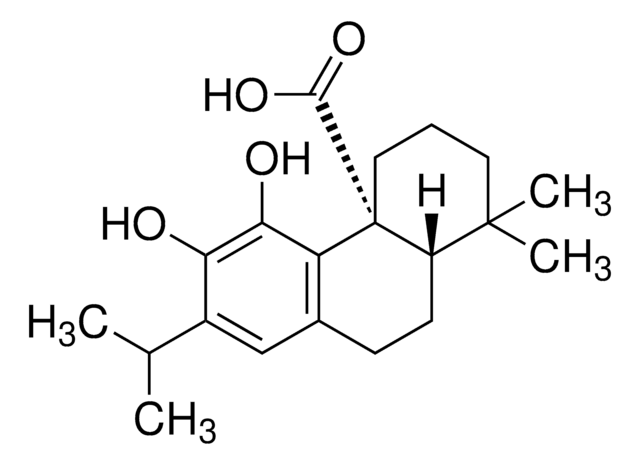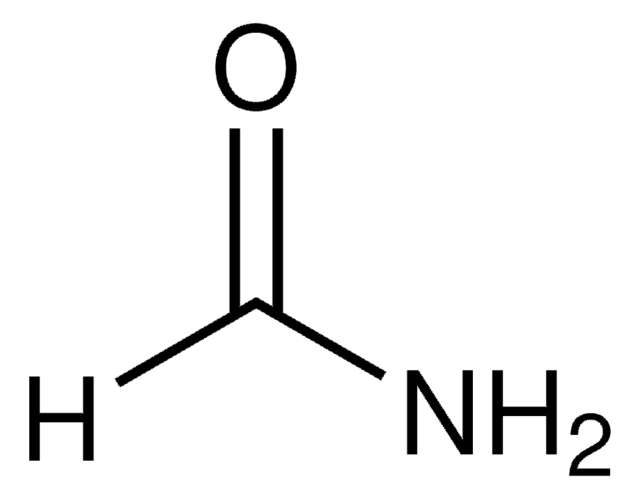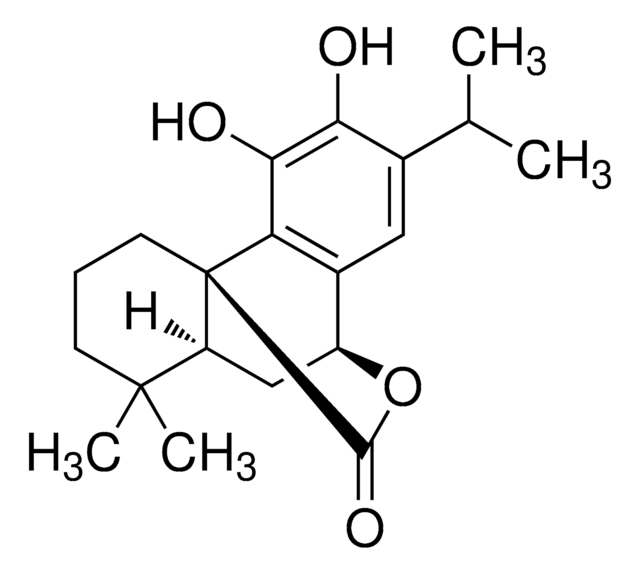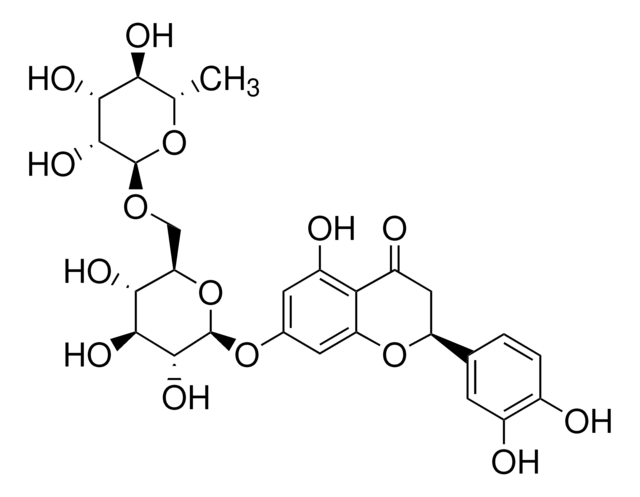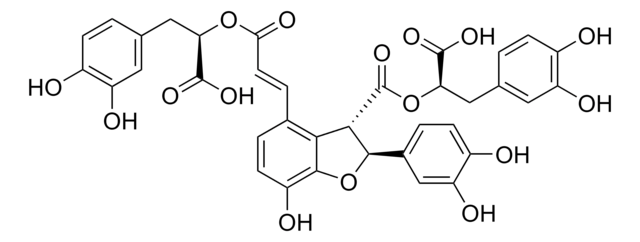R4033
Rosmarinic acid
≥98% (HPLC), from Rosemarinus officinalis L.
Sinónimos:
(R)-O-(3,4-Dihydroxycinnamoyl)-3-(3,4- dihydroxyphenyl)lactic acid, 3,4-Dihydroxycinnamic acid (R)-1-carboxy-2-(3,4-dihydroxyphenyl)ethyl ester
About This Item
Productos recomendados
biological source
Rosemarinus officinalis L.
Quality Level
assay
≥98% (HPLC)
form
powder
storage condition
protect from light
color
white to faint beige
mp
171-175 °C (lit.)
solubility
H2O: 1 mg/mL, clear, colorless
application(s)
metabolomics
vitamins, nutraceuticals, and natural products
storage temp.
2-8°C
SMILES string
OC(=O)[C@@H](Cc1ccc(O)c(O)c1)OC(=O)\C=C\c2ccc(O)c(O)c2
InChI
1S/C18H16O8/c19-12-4-1-10(7-14(12)21)3-6-17(23)26-16(18(24)25)9-11-2-5-13(20)15(22)8-11/h1-8,16,19-22H,9H2,(H,24,25)/b6-3+/t16-/m1/s1
InChI key
DOUMFZQKYFQNTF-WUTVXBCWSA-N
¿Está buscando productos similares? Visita Guía de comparación de productos
General description
Application
- to see its protective effects on the human endothelial cell line (EA.hy926) to treat diabetic atherosclerosis
- to test its effect in 1-Methyl-4-phenyl-1, 2, 3, 6-tetrahydropyridine (MPTP) induced Parkinson′s disease (PD) models on attenuating inflammatory responses and microglia activation
- to test its neuroprotective effects on dopaminergic neurons
- to test its effects on sperm motility, viability and on intracellular calcium ion concentration
- as a reference standard in capillary zone electrophoresis (CZE) method
Biochem/physiol Actions
Storage Class
11 - Combustible Solids
wgk_germany
WGK 3
flash_point_f
Not applicable
flash_point_c
Not applicable
Certificados de análisis (COA)
Busque Certificados de análisis (COA) introduciendo el número de lote del producto. Los números de lote se encuentran en la etiqueta del producto después de las palabras «Lot» o «Batch»
¿Ya tiene este producto?
Encuentre la documentación para los productos que ha comprado recientemente en la Biblioteca de documentos.
Los clientes también vieron
Nuestro equipo de científicos tiene experiencia en todas las áreas de investigación: Ciencias de la vida, Ciencia de los materiales, Síntesis química, Cromatografía, Analítica y muchas otras.
Póngase en contacto con el Servicio técnico


